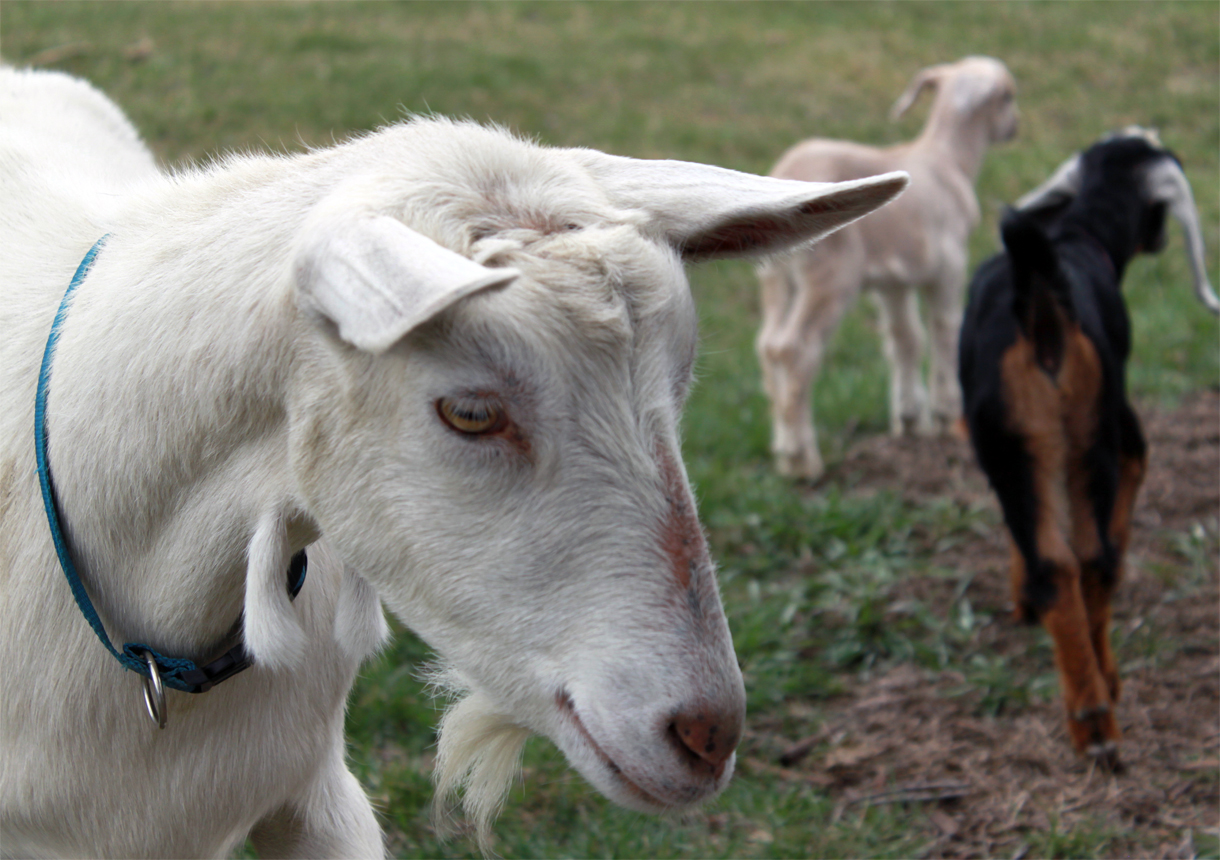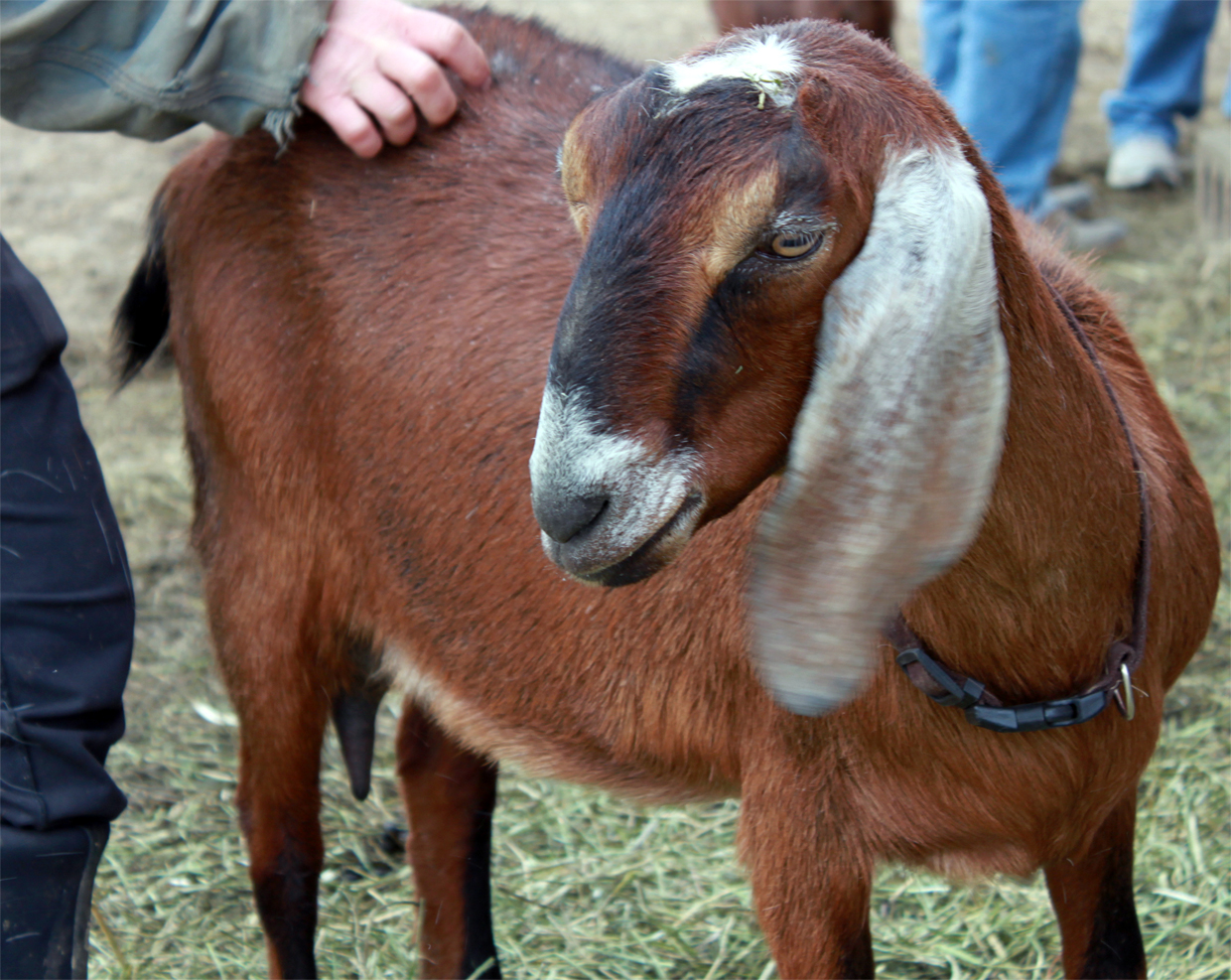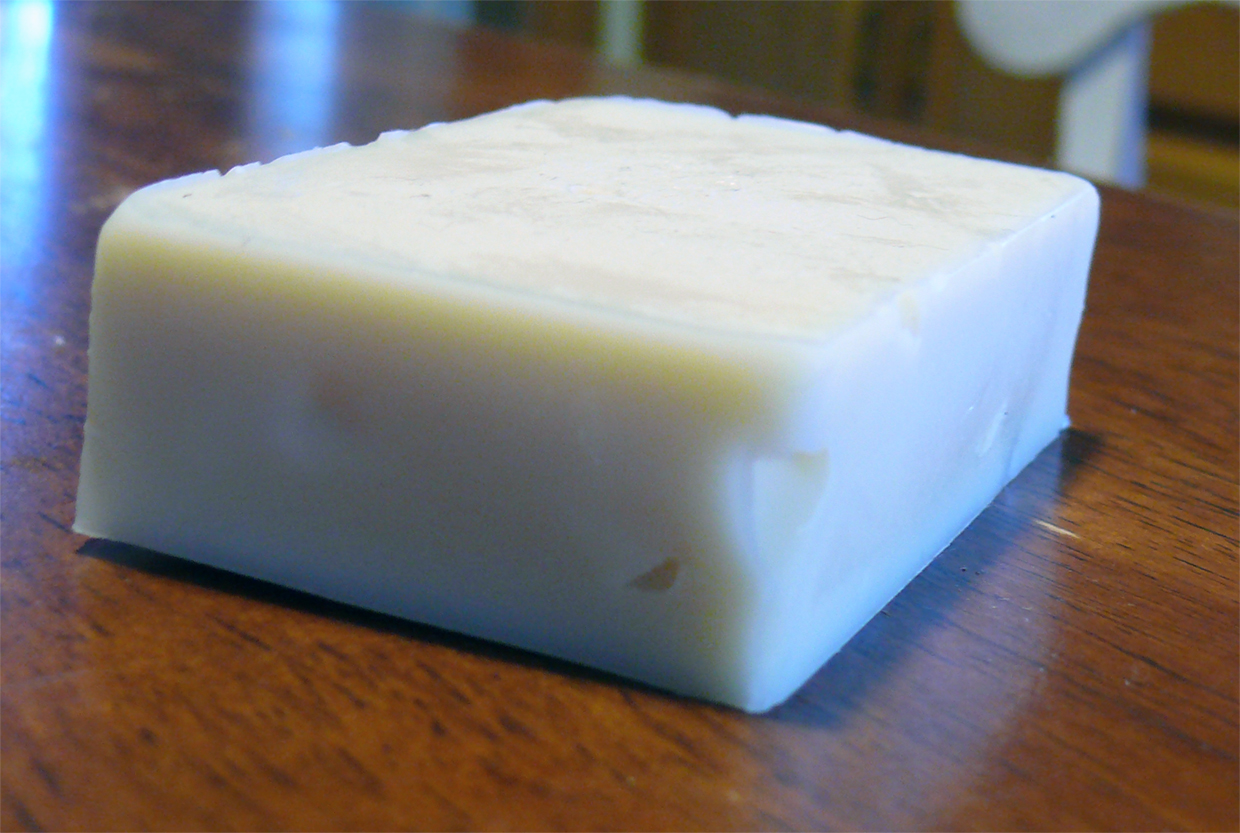Making Cold Pressed, Goat Milk Castile Soap
The first step is to carefully mix the lye and goat milk, making sure that the lye completely dissolves into the milk.
The second step is to blend coconut oil (heated into a liquid) with olive oil.
When the milk and lye mixture is added to the oil, we pour it through a sieve to be sure that any very tiny bits of lye do not enter the oil.
They are mixed until saponification is well under way, and become soap. The lye completely disappears during the process. It does not remain in the soap at all.
When the mixture firms, it is poured into moulds and seasoned for milling.


